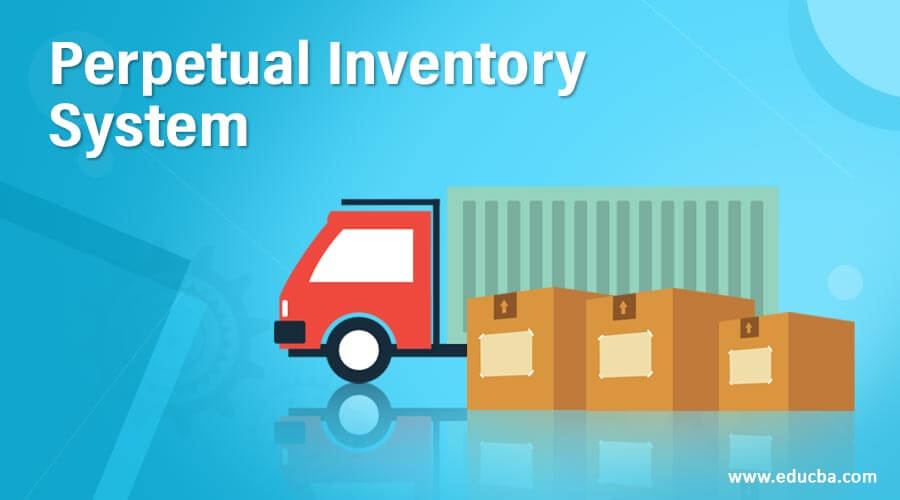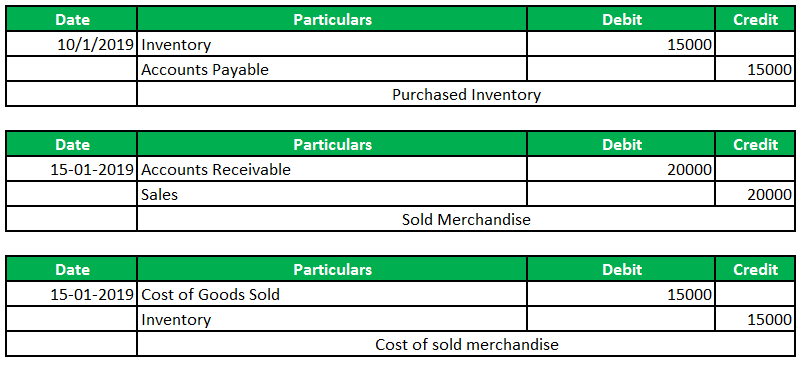Updated July 20, 2023
Introduction
The Perpetual Inventory System is an accounting method for recording inventory sales and purchases in real time using computerized systems.
Companies can use either periodic inventory, perpetual inventory, or a combination of both methods to track inventory. This system helps businesses maintain and update inventory levels regularly, preventing them from overstocking or understocking. Continuously tracking available inventory helps businesses quickly identify items running low or out of stock. Knowing when stock levels are low allows businesses to immediately reorder stock before it runs out.

Example of Perpetual Inventory System
In this system, the inventory updates in the account for each transaction.
Journal Entry for PIS:

Usage of the Perpetual Inventory System
This system primarily comes into use for large businesses that maintain enormous inventories. However, it also has utility for emerging and medium-sized businesses that want to scale up their operations.
For large companies, measuring inventory periodically can be difficult and time-consuming. When there are many departments and various products, identifying which products are out of stock can be very burdensome. With a perpetual inventory system, businesses can easily identify products running low on stock, making managing and optimizing inventory levels easier.
It is crucial for businesses to implement a proper and effective inventory tracking system and to ensure that any data stored is maintained and kept secure. Any loss of data can result in significant financial losses for a business.
Perpetual Inventory System vs Periodic Inventory System
A periodic inventory system is an accounting method in which the amount of inventory is recorded at the end of every accounting period or at certain intervals. In a periodic inventory system, one conducts a physical count of inventory. In contrast, a perpetual inventory system is an accounting method that records the sale or purchase of inventory instantly and continuously using computerized systems.
Here’s how both differ from each other:
- Perpetual inventory system records inventory regularly or continuously, while the periodic inventory system records inventory periodically.
- It uses a computerized system to record the cost of goods sold, while the periodic inventory system uses a physical count to determine the cost of goods sold.
- In a perpetual inventory system, the cost of goods sold account is continuously updated with each sale transaction. In contrast, in a periodic inventory system, the cost of goods sold is calculated at the conclusion of the accounting period.
- Perpetual inventory system uses real-time tracking, while the periodic inventory system does not.
- Also, financial statements are more accurate in the perpetual inventory system than in the periodic inventory system.
Advantages and Disadvantages
Below are the advantages and disadvantages mentioned:
Advantages
- Real-time Inventory Management: With the perpetual inventory system, inventory management can be done in real-time. The inventory can be recorded when purchased and when sold on computerized systems. This continuous tracking of available stocks can help businesses instantly identify inventory goods that are getting out of stock. Knowing that the stock is running low can help businesses take immediate steps in reordering stock before it gets out of stock.
- Identification of Leakage or Theft: The system keeps a real-time track of incoming and outgoing inventory. If there is any theft or shrinkage that occurs in inventory, it can easily be recorded in the management system. While it may not help businesses understand why theft happens, it can provide clues, and businesses can take further actions.
- Lesser Investment in Materials: By using this system, businesses can regularly check incoming and outgoing goods by keeping track of receipts and issued materials. This decreases the investment in excess goods, and keeping track also minimizes storage expenses.
- Helpful in Proper Purchases: By keeping track of inventory in the perpetual inventory system, businesses can easily identify the exact quantity of each material and get insight into which department has a shortage. This helps businesses make proper purchase choices by identifying the department’s needs.
- More Accurate Financial Statements: As the periodic inventory system records inventories after a certain period, usually a year, the balance sheet and cost-of-goods-sold on the P&L statement are inaccurate for the whole year. On the other hand, the perpetual system gives accurate information on inventories and cost-of-goods-sold on financial statements by continuously recording inventory.
Disadvantages
- Scanning Errors: In a perpetual inventory system, inventory management involves scanning the barcode or tag of a product to ensure accurate tracking and accounting of the item within the system. If there is any scanning error, the details for the product may be erroneously accounted for in the tracking system.
- Loss or Theft: In a perpetual inventory system, products are continuously monitored and recorded based on their details. Suppose a product has been previously recorded in the system and is subsequently lost or stolen. In that case, it will remain accounted for in the tracking system until a physical confirmation is made.
- Inability to Identify Breakages: Similarly, if there are any breakages, it cannot identify them and will maintain incorrect records unless physically checked.
- Security Concerns: Proper and effective inventory tracking systems should be implemented by businesses. Any data stored requires maintenance and security. Any data loss may result in losses to the business. Since the system uses the internet, hacking activities are a major concern in maintaining such systems.
Conclusion
The perpetual inventory system is a computerized accounting method that records inventory sales and purchases in real time. It is an effective way for businesses, particularly large companies with enormous inventories, to maintain and update inventory levels regularly, preventing overstocking or understocking. The system has various advantages and disadvantages. Proper implementation and maintenance of the system are essential to avoid financial losses.
Recommended Articles
Here are some further related articles for expanding understanding:



